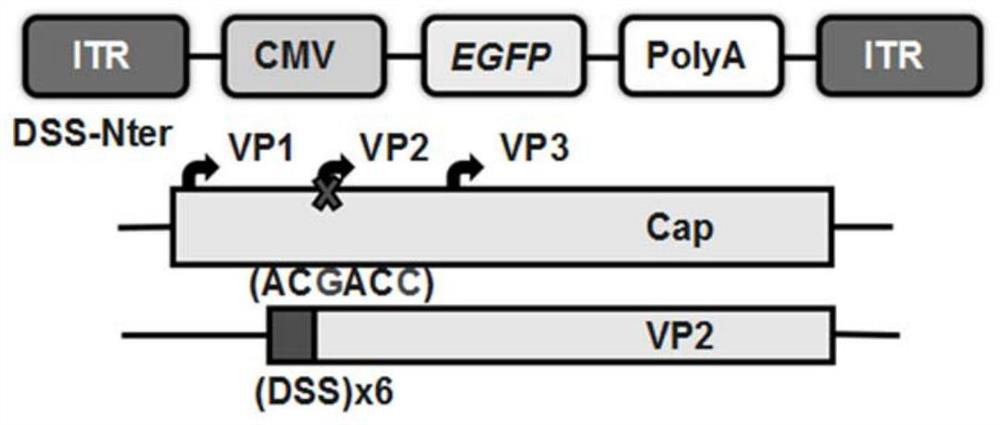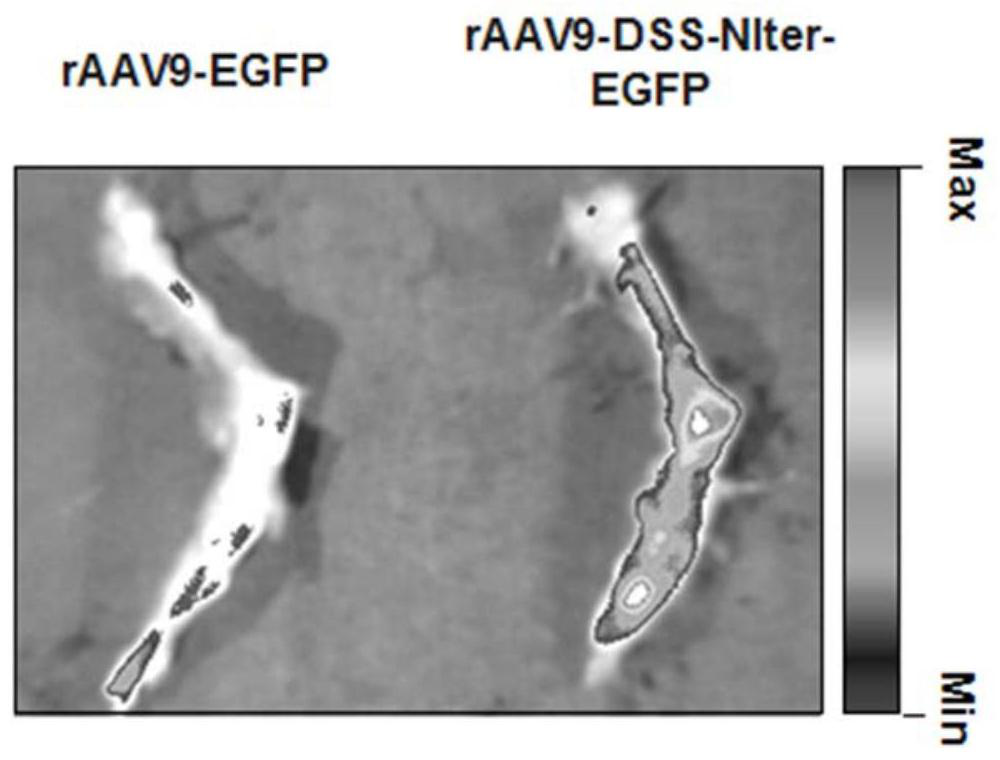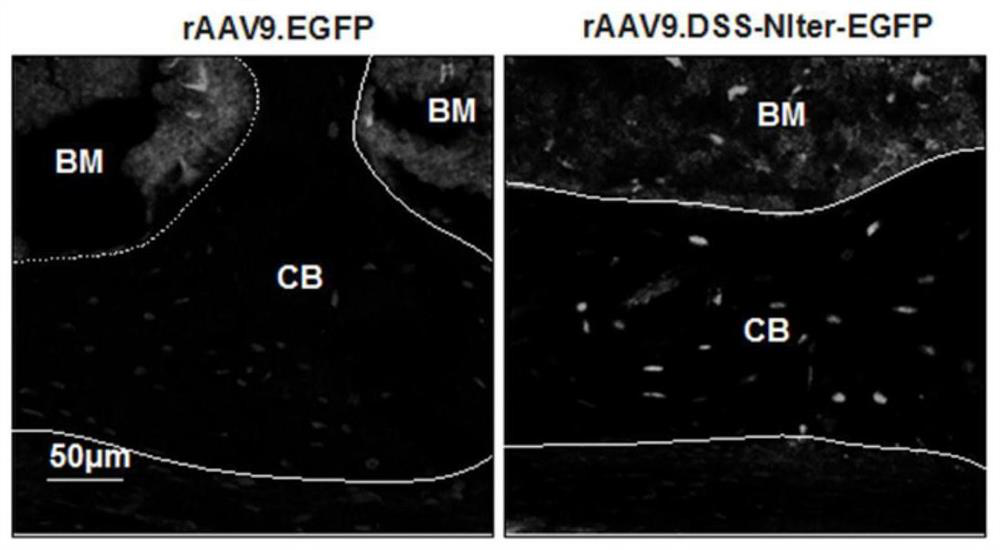Recombinant plasmid for inhibiting SOST gene expression, bone-targeted recombinant adeno-associated virus thereof and application of bone-targeted recombinant adeno-associated virus
A recombinant plasmid and gene expression technology, applied in the fields of application, virus, gene therapy, etc., can solve the complex problems of shRNA therapy, achieve good bone targeting properties, relieve osteoporosis, and reduce the concentration
- Summary
- Abstract
- Description
- Claims
- Application Information
AI Technical Summary
Problems solved by technology
Method used
Image
Examples
Embodiment 1
[0049] 1.1 Preparation of bone targeting virus
[0050] Adeno-associated virus type 2 / 9 (rAAV2 / 9) was used to transform the bone-targeting virus, briefly describe it, and construct the basic sequence encoding bone-targeting peptide DSS (AspSerSer) 6 The codon optimization of the DNA sequence of the AAV2 Rep gene and the AAV9 Cap gene was inserted into the codon of the AAV9 Cap gene to obtain the Q588 capsid (DSS-588).
[0051] Then construct the DSS-Nter capsid, first mutate the start codon of VP2 in pAAV2 / 9 (ACG→ACC), express only VP1 and VP3 (pAAV2 / 9.novp2), and in another plasmid, fuse the DSS sequence To the N-terminus of the AAV9-VP2 ORF, the Kozak sequence and the ATG initiation codon were placed directly upstream of the DSS sequence to allow CMV promoter-driven expression (pcDNA.DSS-VP2(AAV9)), and the constructed pAAV2 / 9. novp2 and pcDNA.DSS-VP2 (AAV9) were used for the production of rAAV. The specific transformation work was completed by Shanghai Union Biotechnology...
Embodiment 2
[0105] In order to verify the effectiveness of the bone-targeted virus in the process of infecting bone cells, the bone-targeted enveloped EGFP virus (AAV9-DSS-Nter-EGFP) ( figure 1 ), and control virus, and rAAV2 / 9-EGFP virus.
[0106] Injected into 10-week-old mice through the tail vein at a concentration of 4*10 11 . Two months later, the mice were subjected to in vivo fluorescence detection, histological GFP immunofluorescence staining, and quantitative detection of GFP protein in different tissues to clarify whether the bone-targeting virus can reach bone cells and its efficiency.
[0107] In vivo fluorescence detection found that the fluorescence intensity in bone tissue was significantly higher than that of ordinary type ( figure 2 ), the immunofluorescence detection of bone tissue sections found that after the bone-targeting virus was injected, the expression level of EGFP in bone cells was significantly higher than that in the control group ( image 3 ), extractin...
Embodiment 3
[0109] In order to verify and screen the available sost-shRNA plasmids, shSost was transferred into 293T cells, and the expression level of Sost mRNA in the cells was detected after 24 hours. Effective fragments were screened for bone-targeted virus packaging.
[0110] Through the Lipo2000 transfection system, we transfected the three Sost-shRNA constructs (see 1.3 in Example 1, and Y10680: GCCTCATCTGCCTACTTGT; Y10681: GCCTTCAGGAATGATGCCA; Y10682: CCATCCCTATGACGCCAAA) interference plasmids into 293T cells, and extracted after 24 hours The detection of cell mRNA found that the Sost-shRNA2 interference sequence (maker: Y20681) has the function of significantly inhibiting the expression of Sost in 293T cells ( Figure 5 ). Therefore, it was selected as the virus envelope plasmid for follow-up research.
PUM
 Login to View More
Login to View More Abstract
Description
Claims
Application Information
 Login to View More
Login to View More - R&D
- Intellectual Property
- Life Sciences
- Materials
- Tech Scout
- Unparalleled Data Quality
- Higher Quality Content
- 60% Fewer Hallucinations
Browse by: Latest US Patents, China's latest patents, Technical Efficacy Thesaurus, Application Domain, Technology Topic, Popular Technical Reports.
© 2025 PatSnap. All rights reserved.Legal|Privacy policy|Modern Slavery Act Transparency Statement|Sitemap|About US| Contact US: help@patsnap.com



